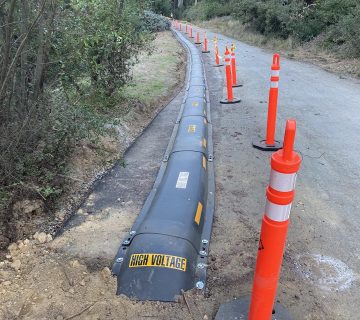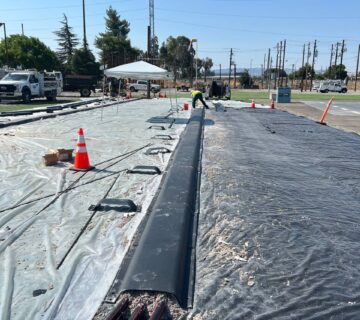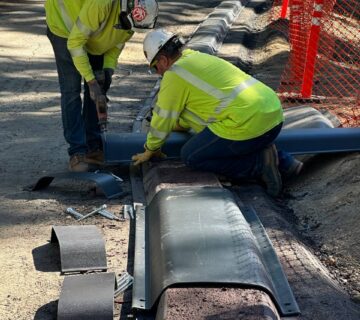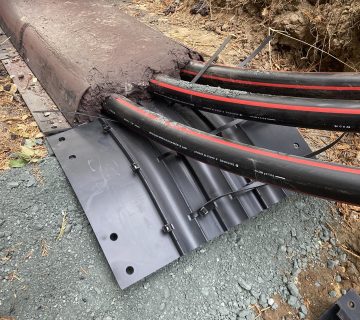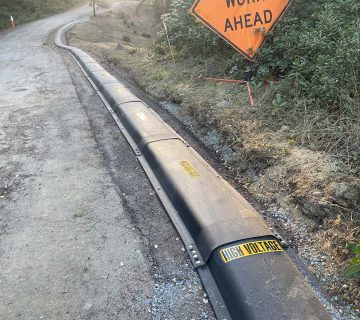Ground Level Distribution System (GLDS): A Safer and More Efficient Alternative to Overhead Power Lines
As urban development accelerates and the demand for safer, more reliable power infrastructure increases, cities and utility companies are rethinking how electricity is distributed. One emerging solution gaining attention is the Ground Level Distribution System (GLDS)—a modern approach that replaces traditional overhead lines with power transmission lines housed in protective conduits at ground level.
In this blog, we explore how GLDS is transforming the landscape of electric power distribution, and why it’s being seen as a safer, more efficient, and aesthetically pleasing alternative to conventional overhead power lines.
What Is GLDS?
Ground Level Distribution System (GLDS) refers to the practice of installing electrical transmission lines at or near ground level inside specially designed conduits. These conduits are usually made of durable materials like high-density polyethylene (HDPE) or reinforced concrete, and they protect the power lines from weather, environmental damage, and accidental contact.
Unlike underground systems, GLDS is more accessible for maintenance and upgrades while still avoiding the common risks associated with overhead lines.
Key Advantages of GLDS
1. Enhanced Safety
One of the most significant benefits of GLDS is safety. Overhead power lines pose hazards such as electrocution, falling wires during storms, and interference with trees and buildings. GLDS mitigates these risks by enclosing cables at ground level, away from human interaction and environmental elements.
2. Reduced Maintenance Costs
Maintaining overhead lines can be expensive and time-consuming, often requiring cranes and bucket trucks to access elevated cables. GLDS allows easier access to transmission lines for maintenance or upgrades, reducing downtime and labor costs.
3. Improved Aesthetics
Overhead wires and utility poles can clutter the skyline and diminish the visual appeal of neighborhoods. GLDS eliminates this visual pollution, contributing to cleaner and more attractive urban and suburban environments.
4. Greater Resilience Against Weather Events
Storms, high winds, and heavy snow often damage overhead power lines, leading to widespread outages. GLDS systems are protected from such conditions, resulting in fewer service interruptions and a more resilient power grid.
5. Faster Installation Compared to Underground Systems
While underground systems offer similar benefits, they are costly and time-intensive to install. GLDS offers a more cost-effective middle ground—providing many of the same advantages with faster and easier deployment.
Use Cases and Applications
GLDS is particularly well-suited for:
- Residential neighborhoods seeking aesthetic and safety improvements.
- Commercial developments with tight construction timelines and safety standards.
- Smart cities aiming for sustainable, resilient infrastructure.
- Disaster-prone areas where overhead lines are frequently damaged.
In each of these cases, GLDS proves to be a future-forward solution for evolving energy distribution needs.
Environmental Impact
By minimizing the need for towering utility poles and reducing the risk of fires and outages, GLDS contributes to a cleaner and more sustainable environment. Its energy-efficient materials and installation processes also align with green construction standards.
The Future of Power Distribution
As power demands grow and the push for modernization continues, Ground Level Distribution Systems represent a pivotal innovation. Cities around the world are beginning to experiment with GLDS to meet safety standards, enhance reliability, and support renewable energy integration.
With the right planning and investment, GLDS can become the new standard in power distribution—delivering electricity more safely, efficiently, and discreetly than ever before.
Conclusion
The Ground Level Distribution System (GLDS) offers a smart, scalable solution for modern power distribution. Its blend of safety, reliability, aesthetics, and cost-effectiveness makes it an increasingly attractive alternative to outdated overhead power lines. As urban infrastructure continues to evolve, GLDS is set to play a key role in shaping the future of energy delivery.


